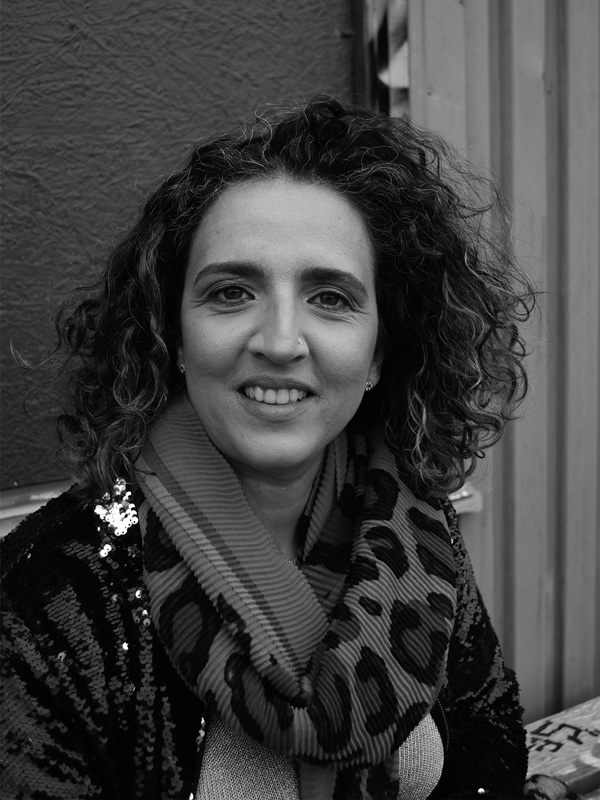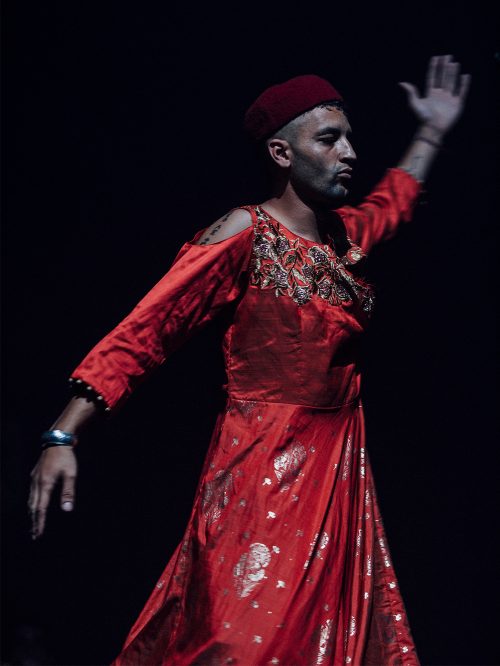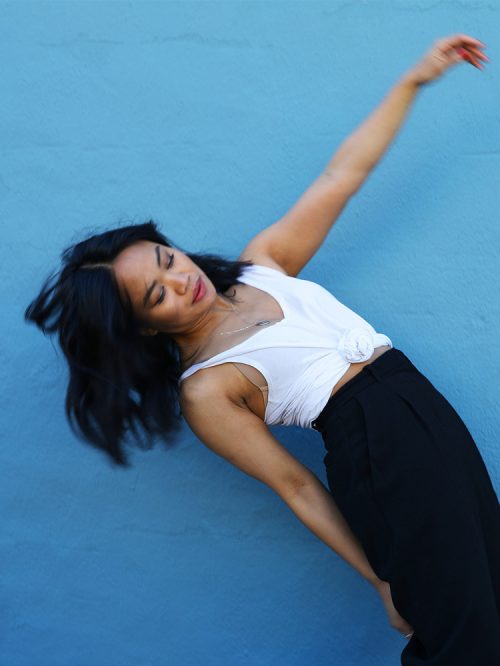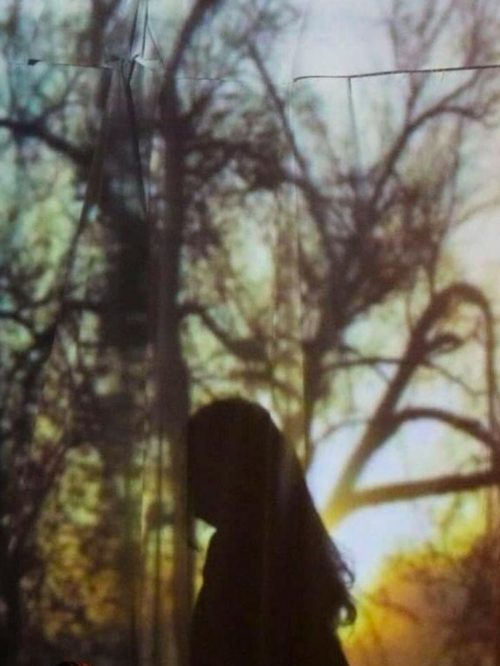Amumma’s dance
My dad remembers
Reaction video
I dance with my dad
My most beautiful dance memory
Onam 2007
I have been working with memories and dance for a long time now. And I will probably continue to work with this subject for a long time to come. It’s exciting on so many different levels. Whose dances are preserved? Which dances are worth saving? Which dancers can be seen in our archives? How can dance live on?
It is also exciting to think about archives and dance together, because in a way it goes against each other. The moment you share the dance, it also disappears. It lies within the nature of dance. After meeting Amanda Piña, I am also excited to think of my work with memories as an anti-capitalist act because modernism requires a form of amnesia. It requires that we forget and that we have memory gaps, when everything must be new.
In the work Amumma’s dance, I try to follow and trace one of my most beautiful dance memories to understand a little more of what really happened – and get more unexpected answers as to why there was no more dancing in my family.
The dance memory takes place during the holiday Onam in India. I remember Grandma suddenly getting up and dancing. I remember closeness, participation and joy – in the same dance. It was also very special to me, since I had never before experienced this holiday. Blaming my mother’s sensible decision for not allowing me to take time off school to take part of that holiday during my childhood, when I was only able to come during the Swedish summer holiday which would translate to India’s rainy season and a lot of school work for my Indian family and my cousins. I drew my own conclusions that perhaps I hadn’t experienced more dance because I simply hadn’t been there during the Indian holiday season without realizing that no one in our family had ever seen my grandmother dancing before…
Several years later, I sat down to talk to my father who shared the same moment, with me, with us, to try to understand more about what happened and why. My Dad first behaved as if he did not want to help me in my exploratory work. As if he found it awkward and tiresome. I in turn got annoyed that my dad did not give me the memories that I was looking for. He did not give me the specific memories I wanted to hear and I got impatient when he spoke far too generalizing about this and that holiday celebrations in India with very impersonal overall descriptions of how festivities can be celebrated, without focusing on dance, on us or this specific situation. But then my dad asked me to back off a bit, “I’m doing it,” he says. I am reminded that “remembering”, “to remember” is a work. And that it takes time, it is not possible to push. But in that moment I can’t refrain myself from sharing my frustration. I am again reminded of how different memories can come back, of how different work is required. Some are difficult to catch. Almost like one has to unravel them to get to the core or tease them to come out. Those other memories seem to be chasing you, as if you can’t get away from them. And how some suddenly appear and ignite the body, bringing the whole body and emotions to life. Like when my dad watches the documentation video and the music makes him suddenly jump up and make some dance steps himself, after previously expressing how tired he was and that the work of remembering the dance does not feel fun.
The conversation with Dad opened up for several new discoveries and for more questions. I did not know that my grandmother was in fact a very cultural person. I did not know that my dad’s grandfather organized shows with local dance troupes at their home. How come my grandmother hid her dance from everyone? What was the decisive factor when she suddenly at the age of 90 years burst out dancing a collective dance depicting the celebration of Onam? How could that dance survive inside of her body for so many decades?
What is it like to live in a family where the joy of dancing is obscured by worries over the children’s physical activity, where one worries that the children will move too much in fear of not being able to satisfy their added hunger? How does that fear manifest itself? How long will that fear live on ?
Credit Amumma’s dance:
Thank you to my dad, Amumma, Konstgruppen Ful, Kubkub, Gisle, Lea, Mira, Mrinalini Dsouza, Sandhya, Kavitha, Mala and all of Sri Sailam family.
Credit finding sisterhood
A version of Amumma’s dance first appeared as farmors dans on Finding Sisterhood platform. Finding Sisterhood* is a decolonising and queer mapping of contemporary dance and performance. This mapping departs from a need to mobilise a movement and name aesthetic movements that are vibrating and vital to contemporary dance and performance while at the same time being marginalised in its history and archives. Finding Sisterhood is one of many sisterly acts where space and platforms are shaped to present and create collective languages for artists who instead of discussing whiteness, cis and hetero norms are in conversation with their own communities.
bonus text:
i dance
I dance
I dance
I dance
I dance (movement)
I dance (movement)
I dance because humans have always danced
I dance because it is the oldest art form
I dance because it is the most beautiful communication
I dance to understand
I dance because I do not understand
I do not dance to be understood
I dance because no one can dance like me
I dance because it’s something I have to do
I dance to feel good
I dance to be happy
I dance to be able to think
I dance to investigate
I dance because it’s just like that
I dance because it’s dangerous to wiggle my hips
I dance to change the rooms
I dance to change people’s views on dance
I dance to change people’s views of me
I dance to change people’s views of themselves
I dance to show other perspectives
I dance to broaden norms
I dance to break prejudices
I dance because I want to
I dance for my parents
I dance for you
I dance because I am a professional dancer
I dance because that’s what I can do. I have an education in dance. I have learned to control my body. Take care of my body, prepare it. Remember different dance steps and movement combinations, different choreographies. I have learned to move my body parts in different ways, in different rhythms, in different formations. bend the body in different ways, lifting the leg high and low.
I dance different dances from different parts of the world, different continents, different social classes, in different rooms, at different times.
I have danced flamenco, tap, matt mattox, hip hop, lindy hop, ballet, release technique, Graham technique, Cunningham, contact improvisation, improvisation, fly-low technique, instant composition, floor bar, Pilates, Kathak, Bharata Natyam, Mohiniyattam, Kalaripayattu, Chau, yoga, dance of the frog, dance of the sad, dance of washing the clothes, dance of hanging clothes. Dancing around the Christmas tree, dancing around the midsummer pole, dancing around in space, dancing all week, for the boyfriend in Lundagård, for my girlfriend in the backyard and dance of togetherness. Disco dance, party dance, vogueing, baba karam, shuffle, tango, samba, moonwalk, robot dance, electric boogie, electric slide, riverdance, soul train, upside down on my head and on the heels. But only a little bit on the tips of my toes.
I dance for my mother, who was accepted to ballet school but never went herself
I dance for my dad, who has the rhythm in his body, as my grandmother always used to say
I dance for those who are not allowed to dance
I dance for those who can no longer dance
I dance for my grandmother, whom I first saw dancing at the age of 90
I dance for my children. I have danced with them on my body. And I have danced with them inside my body
I dance with them every day because it’s the best way to be close. to make someone smile And to make someone go to sleep
I dance because generations before me have danced
I dance because Lilavati danced
I dance because I carry her legacy that must be danced
I dance so that that dance is danced
I dance so that I can remember that dance
I dance so that you too will remember that dance
I dance so that we can carry that dance together
I dance and hope that you will not forget
I dance even though my body hurts
I dance so that my body does not hurt
I dance because I want my children to be free. I want them to own the movement of their bodies. and I want them to know that they own their own bodies. I want them to know that through dance they can start a revolution. I want them to dance with themselves for themselves.
I want my children to dance with others. and I want them to feel the tingle in their stomachs when they dance with someone they like. I want them to know that they can choose their dance and their dance partners.
I dance because I got paid to dance
I prefer to dance with others, in sisterhood and in love
I like to dance in clubs
I dance in the dark
I dance when there is nice music
I dance on stage without music
I’m dancing soon
I dance
I dance and worlds are destroyed
I dance
I dance
I dance (movement)
Suggested Citation
Nair, Rani. 2021. “Amummas Dance.” In: Moving Interventions 1:
Ambiguous Potentials // Performative Awakenings, December 2021. Edited by / Herausgegeben von: Sarah Bergh and Sandra Chatterjee, with Ariadne Jacoby (CHAKKARs -Moving Interventions), copyedited by: Veronika Wagner.
Published by / Veröffentlicht von CHAKKARs – Moving Interventions.
About the author
Rani Nair works with dance and choreography. Memory and archive is recurring thematic in her work. Her choreographies have been programmed at the Centre National de la Dance Paris, ImpulsTanz Vienna, Spielart Festival in Munich, Ignite! Festival of contemporary dance in Delhi, Singapore International Festival of Arts, Gothenburg Dance and Theatre Festival, Spielart festival and at the The Swedish Biennial for Performing Arts. Nair´s work is also represented at the Performing Arts museum, Dansmuseet in Stockholm and in the book Oxford Dictionary of Dance and Re-enactment.







